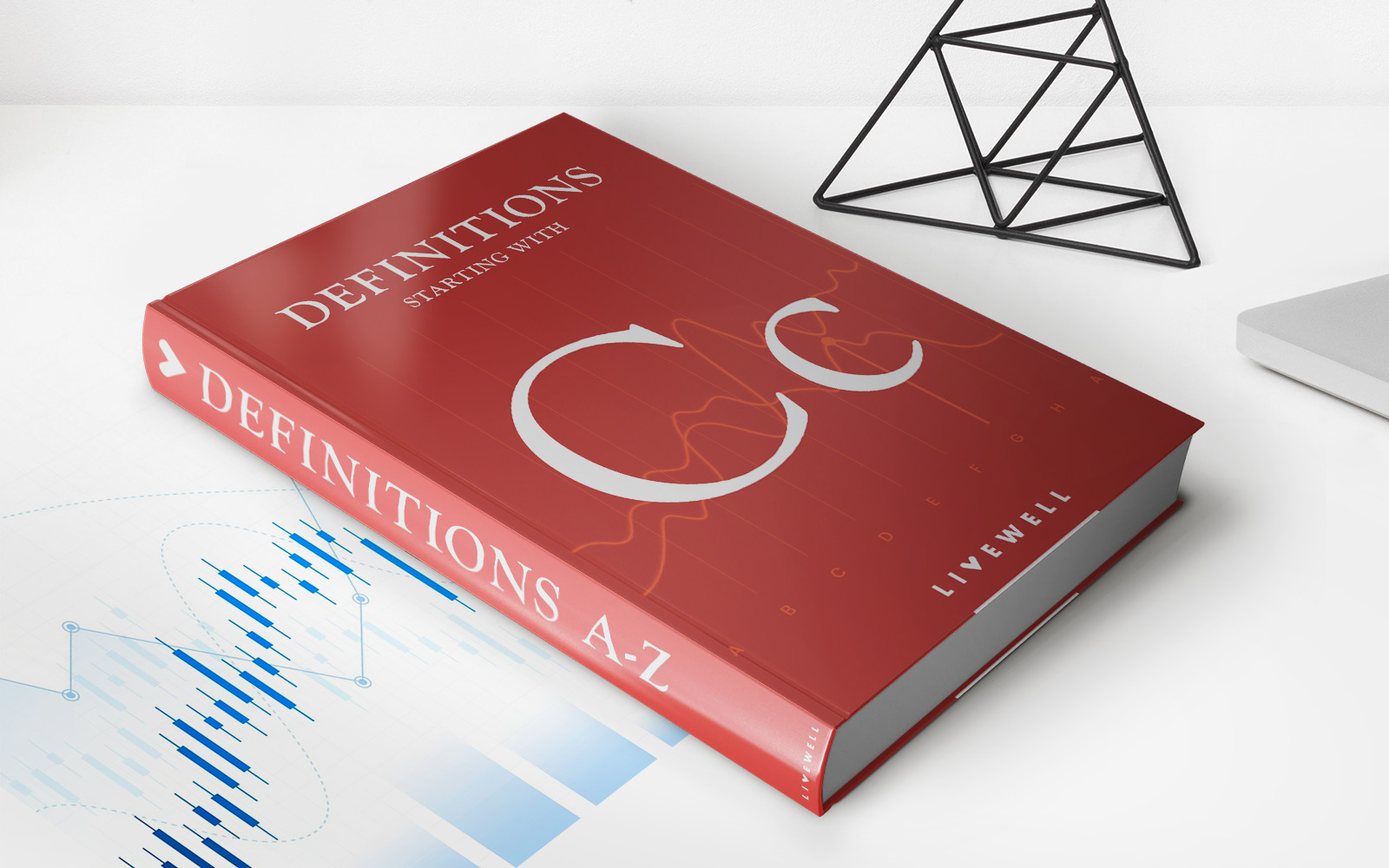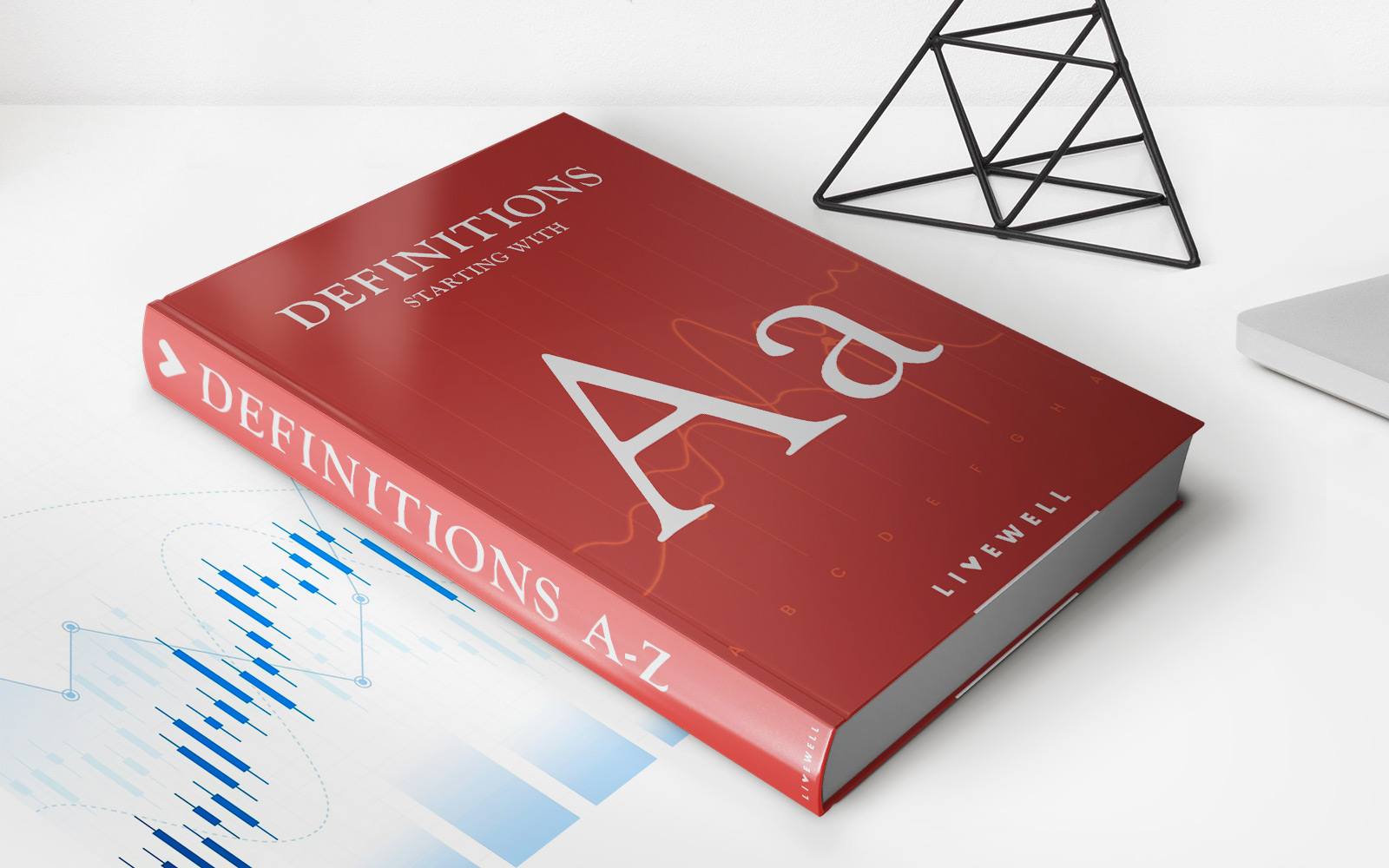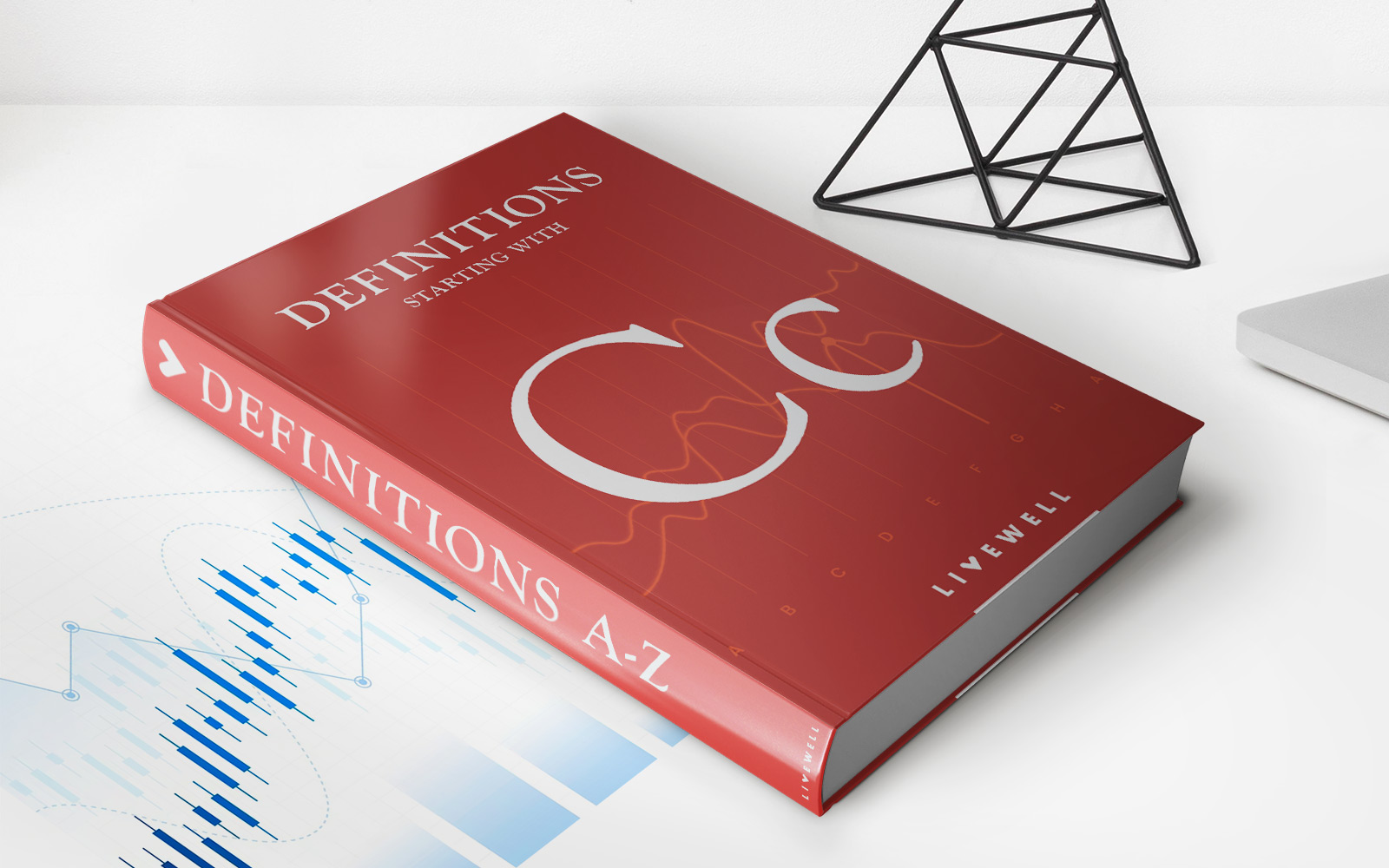

Finance
What Is A Cost Driver In Accounting
Modified: February 21, 2024
Learn about cost drivers in accounting and their impact on finance. Understand how these factors influence financial performance and decision-making.
(Many of the links in this article redirect to a specific reviewed product. Your purchase of these products through affiliate links helps to generate commission for LiveWell, at no extra cost. Learn more)
Table of Contents
Introduction
Welcome to the world of cost drivers in accounting! If you’re looking to gain a deeper understanding of how costs are allocated and managed within a business, you’ve come to the right place. In accounting, cost drivers play a crucial role in determining the expenses associated with various activities or processes of a company.
Cost drivers help businesses identify the factors that influence the costs they incur and provide insights into how to optimize resource allocation. By analyzing cost drivers, organizations can make informed decisions about pricing, budgeting, and performance evaluation. Understanding cost drivers is essential for effective financial management and strategic planning.
In this article, we will delve into the world of cost drivers, exploring their definition, importance, classification, identification, and analysis. We will also explore the role of cost drivers in cost allocation and highlight their key differences from cost centers. Finally, we will discuss the limitations of cost drivers and their implications for decision-making.
So, whether you’re a business owner, an accounting professional, or simply curious about the intricacies of financial management, join us on this journey as we demystify the concept of cost drivers in accounting.
Definition of Cost Driver
A cost driver can be defined as any factor or activity that directly influences the costs incurred by a business. It is a measurable attribute that has a cause-and-effect relationship with the consumption of resources and the generation of expenses. Cost drivers are used to allocate costs to various products, services, or business processes based on the level of resources they consume.
Cost drivers can vary across different industries and organizations and are specific to the nature of the business and its operations. They can be tangible, measurable factors such as labor hours, machine hours, units produced, or miles driven. They can also be intangible factors like the number of customer complaints, the complexity of a project, or the level of customization required.
By identifying and understanding the cost drivers in a business, management can gain insights into the activities that are driving costs and make informed decisions about resource allocation and cost optimization. For example, if machine hours are identified as a significant cost driver in a manufacturing company, management can focus on improving machine efficiency to reduce costs.
Cost drivers are crucial in cost accounting as they help in the accurate allocation of costs to products, services, or various operational activities. By assigning costs to specific drivers, businesses can determine the true cost of their products or services and make pricing decisions accordingly. This information is vital in determining profitability and making strategic business decisions such as product diversification, outsourcing, or process improvements.
It is important to note that cost drivers are not necessarily the same as cost centers. While cost drivers are factors that influence costs, cost centers are specific departments, units, or divisions within an organization that incur costs. Cost drivers can be associated with one or multiple cost centers, depending on the nature of the business operations.
Overall, the definition of cost drivers revolves around the idea that they are influential factors that drive the consumption of resources and, consequently, the costs incurred by a business. Effectively identifying and managing these drivers is crucial for accurate cost allocation, sound financial management, and informed decision-making.
Importance of Cost Drivers in Accounting
Cost drivers play a critical role in accounting as they provide valuable insights into the factors that influence a business’s costs. Understanding cost drivers is crucial for accurate cost allocation, effective financial management, and informed decision-making. Here are several reasons why cost drivers are important in accounting:
1. Cost Allocation: Cost drivers help allocate costs to specific products, services, or operational activities based on their resource consumption. This allows businesses to accurately determine the cost of each product or service, enabling them to make informed pricing decisions and identify areas for cost reduction.
2. Performance Evaluation: By linking costs to specific drivers, businesses can assess the performance of different products, services, or business processes. They can identify which drivers are contributing to higher costs and take necessary actions to improve efficiency and reduce expenses.
3. Budgeting and Forecasting: Cost drivers provide valuable inputs for budgeting and forecasting purposes. By understanding the drivers, businesses can estimate future costs based on projected activities or volumes, helping them develop realistic budgets and make informed financial forecasts.
4. Cost Optimization: Analyzing cost drivers helps identify inefficient processes or activities that drive up costs. By focusing on optimizing these drivers, businesses can reduce expenses, improve productivity, and enhance overall profitability.
5. Decision-Making: Cost drivers provide critical information for decision-making. Management can analyze the impact of different factors on costs and assess the feasibility and potential profitability of various initiatives, such as product diversification, process improvements, or outsourcing decisions.
6. Resource Allocation: Understanding the drivers allows businesses to allocate resources effectively. By identifying which activities or products require more resources, management can distribute them appropriately, ensuring optimal resource utilization and minimizing waste.
By leveraging cost drivers in accounting, businesses can make better-informed decisions, allocate resources more effectively, and ultimately improve their financial performance. Cost drivers serve as a vital tool for management in understanding the underlying factors that contribute to costs, enabling them to take proactive measures to control expenses and drive overall business success.
Examples of Cost Drivers
Cost drivers can vary across different industries and organizations, as they depend on the nature of the business and its operations. Here are some examples of common cost drivers:
- Direct Labor Hours: The number of hours of direct labor required to produce a product or deliver a service. This cost driver is commonly used in manufacturing and service industries.
- Machine Hours: The number of hours a machine is in use during production. This cost driver is applicable to manufacturing companies that heavily rely on machinery and equipment.
- Units Produced: The number of units produced or sold. This cost driver is commonly used to allocate costs in manufacturing and retail industries.
- Number of Transactions: The number of transactions processed, such as sales transactions in a retail business or financial transactions in a banking industry. This cost driver helps allocate costs in service-oriented businesses.
- Square Footage: The area or square footage occupied by a department, store, or facility. This cost driver is used in industries where the space utilized has a significant impact on costs, such as warehousing or real estate businesses.
- Number of Customers: The number of customers served or the size of the customer base. This cost driver is particularly relevant in service industries like healthcare where the number of patients influences the costs incurred.
- Number of Service Calls: The number of service calls or maintenance requests. This cost driver is important for businesses that provide maintenance or repair services.
- Complexity: The complexity or intricacy of a project or task. This cost driver is often used in consulting or project-based industries where more complex projects require additional resources and incur higher costs.
- Number of Change Orders: The number of change orders or modifications requested by customers or clients. This cost driver is relevant in industries where customized products or services are provided.
It is worth noting that these are just a few examples, and cost drivers can vary widely depending on the specific industry, business model, and operations. Identifying the most relevant and significant cost drivers is essential for accurately allocating costs and understanding the cost structure of a business.
Classification of Cost Drivers
Cost drivers can be classified into two main categories: volume-based cost drivers and activity-based cost drivers. Let’s explore each category:
- Volume-based Cost Drivers: Volume-based cost drivers are directly related to the volume or level of activity within a business. They measure the relationship between the cost incurred and the quantity or volume of a particular input. Examples of volume-based cost drivers include units produced, machine hours, direct labor hours, or sales volume.
- Activity-based Cost Drivers: Activity-based cost drivers focus on the specific activities or factors that drive costs within an organization. They are more detailed and capture the cause-and-effect relationship between the activities performed and the costs incurred. Examples of activity-based cost drivers include the number of setups, the number of customer orders processed, or the number of machine breakdowns.
Volume-based cost drivers are commonly used in traditional costing systems, where costs are allocated based on the number of units produced or sold. These drivers assume that as the volume of activity increases, the costs will increase accordingly. However, it’s important to note that in some cases, the relationship between volume and cost may not be linear.
Activity-based cost drivers are used in activity-based costing (ABC) systems, which provide a more accurate and detailed understanding of how activities drive costs. ABC systems allocate costs based on the consumption of activities, taking into account the complexity and resource demands of each activity. This approach makes it easier to identify cost drivers that may not be directly related to volume, but still significantly impact costs.
It’s important to choose the appropriate classification of cost drivers based on the specific needs and operations of the business. Volume-based cost drivers are simpler to implement and are suitable for organizations with relatively homogeneous products or services. On the other hand, activity-based cost drivers provide more accurate cost allocation and are beneficial for businesses with complex operations or a wide variety of products or services.
By understanding the classification of cost drivers, businesses can apply the most appropriate costing system and allocate costs in a way that accurately reflects the drivers of those costs. This leads to improved cost management, better decision-making, and enhanced financial performance.
Identifying and Analyzing Cost Drivers
Identifying and analyzing cost drivers is a crucial step in understanding the factors that influence costs within a business. By accurately identifying cost drivers, businesses can gain insights into the activities or processes that drive expenses and make informed decisions about resource allocation and cost optimization. Here are some steps to effectively identify and analyze cost drivers:
- Review Historical Data: Start by analyzing historical financial and operational data to identify patterns and trends. Look for cost variations and correlations with different activities or factors. This analysis can help identify potential cost drivers that have a direct impact on expenses.
- Conduct Activity-Based Analysis: If feasible, implement an activity-based costing (ABC) system to gain a detailed understanding of the activities that consume resources and drive costs. This analysis allows for a more accurate identification and analysis of cost drivers by linking the costs incurred to specific activities.
- Engage Cross-Functional Teams: Collaborate with different departments or teams within the organization to gain diverse perspectives on cost drivers. This can help uncover potential drivers that may not be apparent from a single department’s viewpoint and provide a comprehensive understanding of the factors impacting costs.
- Use Cost-Allocation Tools: Utilize cost-allocation tools such as cost driver analysis, regression analysis, or activity-based management (ABM) techniques. These tools can help quantitatively analyze the relationship between costs and various activities or factors, providing insights into the strength of the impact and the predictive value of different cost drivers.
- Consider External Factors: Take into account external factors that may impact costs, such as changes in market conditions, industry trends, or regulatory requirements. External factors can act as additional cost drivers that need to be considered when analyzing the overall cost structure of a business.
- Regularly Monitor and Update: Cost drivers may change over time as the business evolves or external circumstances shift. It’s important to regularly monitor and update the analysis to ensure that the identified cost drivers remain relevant and aligned with the current operations and business environment.
By following these steps, businesses can identify and analyze the cost drivers that have the most significant impact on their expenses. This knowledge enables management to make informed decisions about resource allocation, process improvement, and cost optimization, ultimately leading to improved operational efficiency and financial performance.
Role of Cost Drivers in Cost Allocation
Cost allocation is a process used to assign costs to specific products, services, or business activities. Cost drivers play a crucial role in this process, as they determine how costs are allocated based on the consumption of resources. Here is an overview of the role of cost drivers in cost allocation:
Accurate Cost Allocation: Cost drivers help ensure that costs are allocated accurately and reflect the actual resource usage of each product, service, or activity. By identifying the drivers that have the strongest correlation with costs, businesses can assign costs in a more precise and transparent manner.
Proportional Allocation: Cost drivers enable costs to be allocated proportionally, meaning that the allocation is based on the level of activity or resource consumption. For example, if machine hours are identified as a cost driver, products that require more machine hours will bear a higher proportion of the machine-related costs.
Correct Pricing: Cost drivers play a vital role in determining the true cost of a product or service. By accurately allocating costs based on drivers, businesses can calculate the total cost of production and incorporate it into their pricing strategies. This ensures that prices are set at a level that covers both direct costs and a fair share of indirect costs, leading to improved profitability.
Product Profitability Analysis: Cost drivers enable businesses to analyze the profitability of individual products or services. By allocating costs based on specific drivers, management can assess the profitability of each product line or service offering. This analysis helps identify the most profitable offerings and allows the business to focus resources on those areas.
Activity-Based Costing (ABC): Cost drivers are particularly important in activity-based costing systems. ABC systems allocate costs based on the consumption of activities rather than merely volume-based measures. Cost drivers in ABC provide a more accurate and detailed understanding of the activities that drive costs, allowing for better cost allocation and cost management.
Improved Decision-Making: Cost allocation based on cost drivers provides meaningful information for decision-making. Businesses can analyze the costs associated with different drivers, helping them make informed choices, such as investing in cost reduction initiatives, modifying product offerings, or identifying process improvement opportunities.
Cost Control and Optimization: Cost drivers are instrumental in cost control efforts. By examining the drivers and their impact on costs, businesses can identify opportunities to reduce or optimize expenses. This knowledge enables them to focus on improving efficiency, eliminating wasteful activities, and making strategic decisions to manage costs effectively.
In summary, cost drivers play a crucial role in the cost allocation process. They provide a framework for accurately assigning costs to products, services, or activities based on resource consumption. By implementing effective cost allocation practices driven by cost drivers, businesses can gain insights into their cost structure, make informed decisions, and ultimately improve overall financial performance.
Cost Drivers vs Cost Centers
Cost drivers and cost centers are key concepts in cost accounting, but they serve different functions within an organization. Let’s explore the differences between cost drivers and cost centers:
Cost Drivers: Cost drivers are factors or activities that directly influence the costs incurred by a business. They provide insights into the specific causes of costs and are used to allocate costs to various products, services, or operational activities based on the level of resource consumption. Cost drivers can be tangible, such as labor hours or machine hours, or intangible, such as customer complaints or project complexity. The identification and analysis of cost drivers are essential for accurate cost allocation, cost control, and informed decision-making.
Cost Centers: Cost centers, on the other hand, are specific departments, divisions, or units within an organization that incur costs. Cost centers are responsible for specific activities and have managers who are accountable for the costs associated with those activities. Cost centers are used to track and allocate costs to specific departments or functions within an organization. Examples of cost centers include production departments, marketing departments, or customer service departments.
The key differences between cost drivers and cost centers are as follows:
Focus: Cost drivers focus on the specific factors or activities that drive costs within an organization, providing insights into the causes of expenses. Cost centers, on the other hand, focus on specific departments or units within the organization where costs are incurred. They are used for tracking and allocating costs to those departments.
Measurement: Cost drivers are typically measured in terms of the quantity or volume of the driver, such as labor hours, machine hours, or units produced. Cost centers, on the other hand, are measured based on the cost incurred by the department or unit. Cost centers provide a way to track and analyze costs related to specific departments or functions.
Allocation of Costs: Cost drivers are used to allocate costs to products, services, or operational activities based on the level of resource consumption. They help determine the true cost of each product or service. Cost centers, on the other hand, are used to allocate costs to specific departments or functions within the organization. The allocation of costs in cost centers helps in evaluating the performance and contribution of each department to the overall cost structure.
Management Accountability: Cost drivers provide insights into the specific activities or factors that influence costs, helping identify areas for improvement and cost optimization. Cost centers, on the other hand, are managed by department managers who are responsible for controlling and managing the costs incurred within their respective cost centers.
In summary, cost drivers and cost centers are different concepts in cost accounting. While cost drivers focus on specific factors or activities that influence costs, cost centers track and allocate costs to specific departments or functions within an organization. Both concepts play important roles in understanding and managing costs in a business, enabling accurate cost allocation, efficient resource management, and informed decision-making.
Limitations of Cost Drivers
While cost drivers are a valuable tool in cost allocation and management, it’s important to recognize their limitations. Understanding these limitations can help businesses make more informed decisions and avoid potential pitfalls. Here are some common limitations of cost drivers:
Assumption of Linearity: Many cost drivers assume a linear relationship between the driver and the cost incurred. However, this may not always hold true. In some cases, costs may not vary proportionally with the volume of the cost driver. It’s crucial to analyze the relationship between the driver and costs to ensure accurate cost allocation.
Lack of Precision: Cost drivers rely on assumptions and approximations to allocate costs. They may not capture the exact causality or complexity of cost relationships. There may be inherent limitations in the data available, making it challenging to precisely quantify the impact of cost drivers on specific activities or products.
Changing Business Landscape: Over time, the business landscape and operations may change, potentially rendering existing cost drivers less relevant or less representative of resource consumption. Regular review and evaluation of cost drivers are necessary to ensure their continued validity and accuracy in different business contexts.
Difficulty in Identifying Intangible Drivers: Some cost drivers, such as customer satisfaction or process complexity, are intangible and difficult to measure objectively. It can be challenging to determine their precise impact on costs and allocate them accurately. Businesses may need to rely on subjective evaluations or estimates when considering the influence of intangible factors as cost drivers.
Complexity and Resource Requirements: Implementing and managing cost drivers can be complex and resource-intensive. It may require investments in data collection systems, analysis tools, and ongoing monitoring efforts. Small businesses or those with limited resources may face challenges in implementing and maintaining an effective cost driver system.
Inherent Simplifications: Cost drivers are simplifications of complex cost structures. They aim to provide a manageable framework for cost allocation but may oversimplify the actual relationships between activities and costs. It’s important to recognize that cost drivers are a tool for practical decision-making and not an exact representation of cost causality.
External Factors: Cost drivers may not capture the impact of external factors on costs. Economic changes, market trends, or regulatory requirements can significantly influence costs but may not be captured by internal cost drivers. Businesses need to consider these external factors separately when assessing the overall cost structure and planning accordingly.
Despite these limitations, cost drivers remain a valuable tool in cost management and decision-making. They provide a structured approach to understanding cost relationships and resource consumption. By recognizing the limitations and incorporating them into the analysis, businesses can make more informed decisions and effectively manage their costs.
Conclusion
Cost drivers play a pivotal role in the field of accounting, providing insights into the factors that influence costs and facilitating accurate cost allocation. By understanding and analyzing cost drivers, businesses can make informed decisions about resource allocation, cost optimization, and strategic planning. However, it’s crucial to acknowledge the limitations of cost drivers and consider them in the broader context of cost management.
The proper identification and analysis of cost drivers enable businesses to allocate costs accurately, evaluate product profitability, and make pricing decisions based on the true cost of production. Cost drivers also provide a framework for evaluating performance, budgeting, and forecasting, allowing businesses to align their operations with their strategic goals.
It is important to note that cost drivers are not static and can change over time. Evolving business environments, market dynamics, and technological advancements may require the reassessment and adjustment of cost drivers to ensure their continued relevance and accuracy. Regular review and monitoring are essential to maintain the effectiveness of cost driver systems.
While cost drivers have their limitations, such as assumptions of linearity and difficulties in quantifying intangible factors, they remain an invaluable tool in understanding cost structures and facilitating decision-making. Considering the broader context, including external factors and the dynamic nature of business, is essential to effectively harness the power of cost drivers.
In conclusion, cost drivers are an integral component of cost accounting, providing valuable insights into cost allocation, resource utilization, and performance evaluation. By leveraging cost drivers effectively, businesses can optimize their costs, enhance profitability, and make informed decisions that drive sustainable growth and success in today’s complex business landscape.














